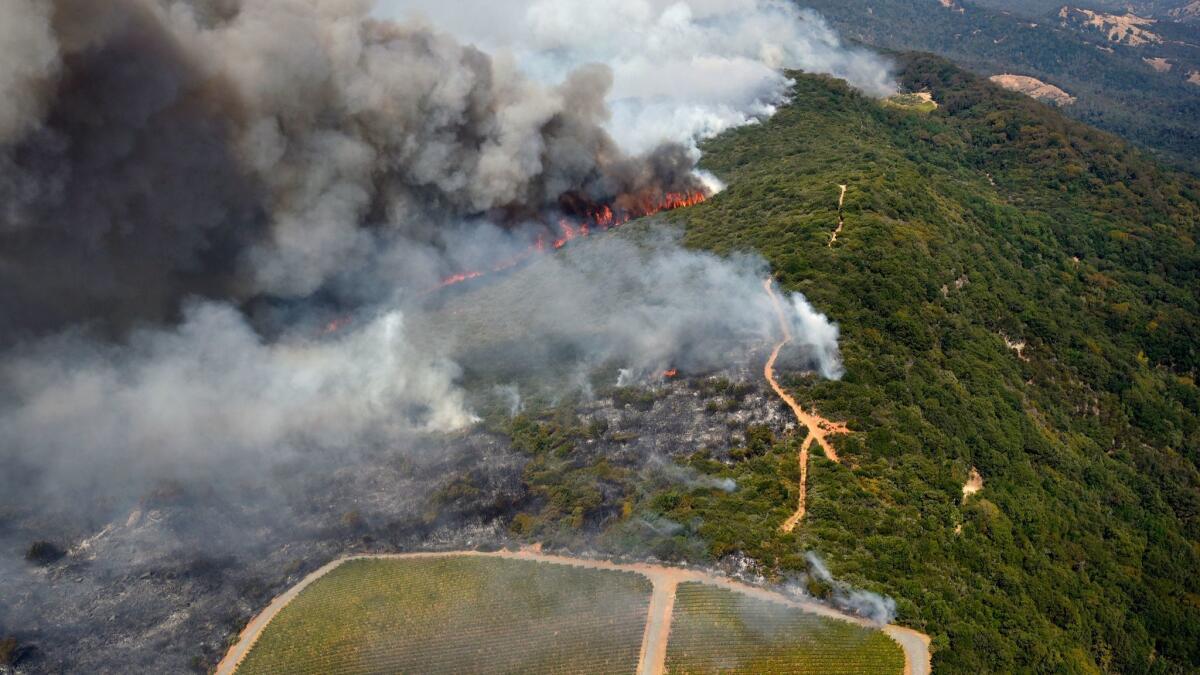10 Napa Valley wineries assess long-term effects of wildfires as recovery begins

- Share via
A month after deadly wildfires swept through California’s famed wine country, hot-air balloons are floating again over Napa Valley vineyards splashed with fall colors. On the heels of the disaster, a new winery is opening, keeping the name it chose some time ago: Ashes and Diamonds.
The fires had only a minimal effect on the area’s wineries, according to the Wine Institute, an advocacy and policy group. Of the 1,200 wineries in Sonoma, Napa and Mendocino, about 10 were destroyed or heavily damaged, and 90% of this year’s harvest already was complete, the institute said.
Most vineyards were spared due to their high moisture content, and some even helped save surrounding structures by acting as fire breaks.
But many operators are now grappling with other long-term effects from the fires that killed 43 people and wiped out 8,900 buildings: making up for losses from being closed at the busiest time of year, assessing the impact of smoke and other environmental damage on this year’s vintage, and persuading tourists to return after weeks of news coverage of the fires’ devastation.
One of the most graphic scenes of destruction to emerge was that of the Signorello Estate winery engulfed in flames. Lost in the fire was the Napa winery’s signature stone hospitality building. A kitchen, corporate offices, a wine lab and owner Ray Signorello Jr.’s home also were destroyed.
“We lost all our servers, systems, computers, the things we used to do business,” Signorello said. But he plans to rebuild and says he’s “trying to get people back to work.”
At Cardinale Winery in Oakville, where just one Cabernet Sauvignon vintage is made from prized mountain appellations each year, winemaker Chris Carpenter is eyeing the grapes cautiously. He was a rare winemaker willing to say the fires’ effects would be felt for years, noting there also will be environmental issues to contend with.
Only 50% of Cardinale’s harvest was finished when the fires erupted, and he’s worried about smoke tainting what remains.
“All the questions are unknown right now, and we hope to have a handle on that after fermentation,” Carpenter said.
Carpenter said he had a chance to try some smoke-tainted wines in 2008, and they were not very pleasant — like a bacon-flavored wine.
“If we sense any of that, we won’t bottle,” he said.
More to Read
Sign up for Essential California
The most important California stories and recommendations in your inbox every morning.
You may occasionally receive promotional content from the Los Angeles Times.










